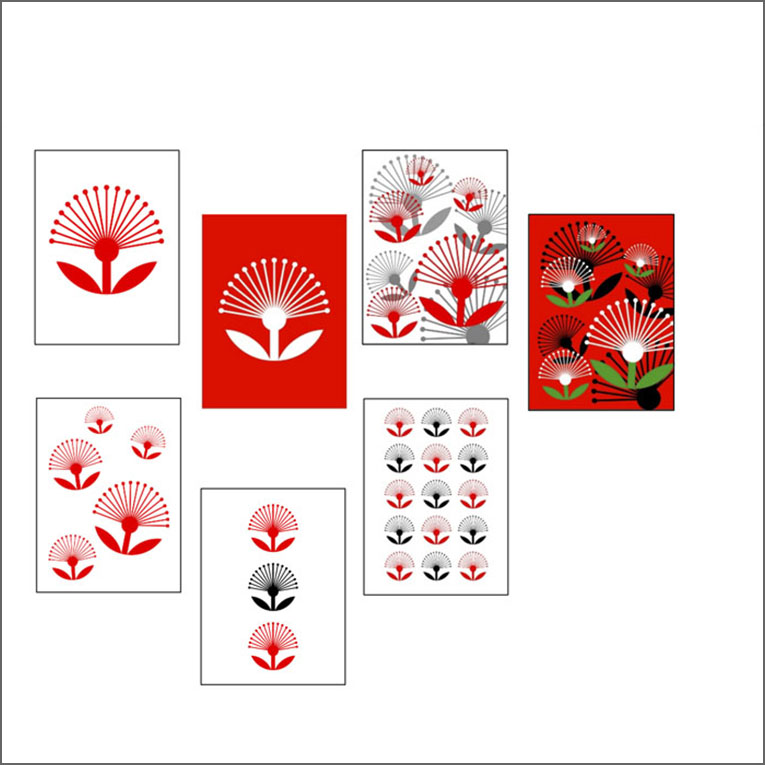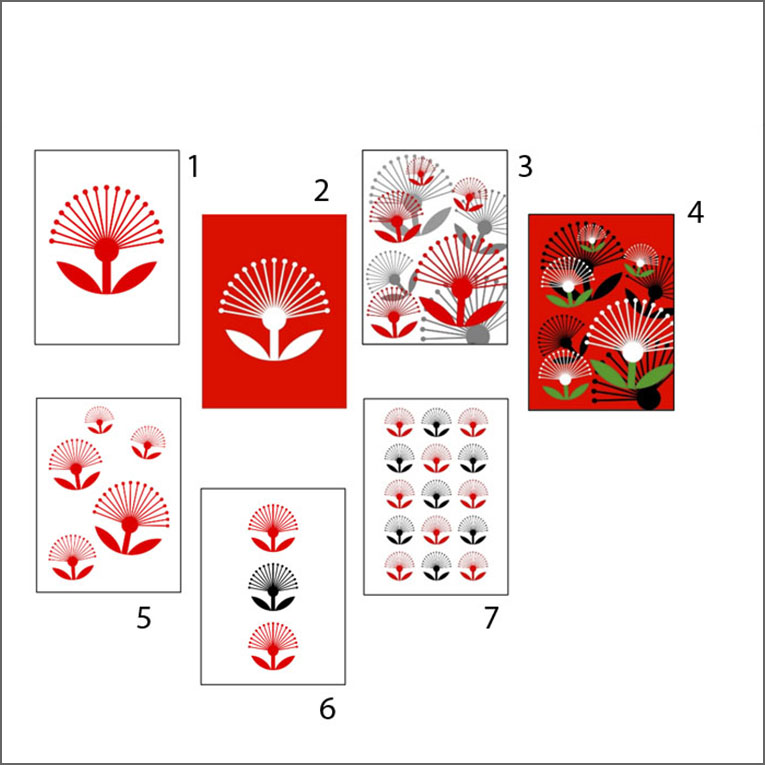Description:
Pohutukawa cards Xmas cards by ARTearoa
Great blank pohutukawa gift cards. Seven different designs! And yes, we love these stylished pohutukawa cards.Sending a gift? Sending an Xmas gift? Add one of these beautiful pohutukawa cards.
We are happy to add your message to the card.
Size pohutukawa cards:
180mm x 130mm
(7.09" x 5.12")
Check out our POP-ART pohutukawa tree card >>
About Pohutukawa trees
Pōhutukawa is New Zealand's Christmas tree, and holds a prominent place in Māori mythology.New Zealand's Christmas tree
The blazing red flowers of pōhutukawa around Christmas time have earned this tree the title of New Zealand's Christmas tree. Pōhutukawa and rātā belong to the genus Metrosideros.In New Zealand, this genus is represented by two pōhutukawa (mainland and Kermadec), six species of rātā vine, a related shrub, and three tree rātā.
Mainland pōhutukawa (M. excelsa) occurs naturally in the upper half of the North Island (north of New Plymouth and Gisborne) although it grows from one end of the country to the other. It is easily distinguished from rātā by the hairs on the underside of the leaves.
Sacred trees
Pōhutukawa and rātā hold a prominent place in Māori mythology. Legends tell of the young Māori warrior, Tawhaki and his attempt to find help in heaven to avenge his father's death. He subsequently fell to earth and the crimson flowers are said to represent his blood.Possibly the most famous pōhutukawa in Māori legend is a small, wind-beaten tree clinging to the cliff face near Cape Reinga. The 800-year-old tree is reputed to guard the entrance to a sacred cave through which disembodied spirits pass on their way to the next world.
Rātā was often respected for its immense size, which provided, among other things, shelter for weary travellers.
Source: Department of Conservation >>


